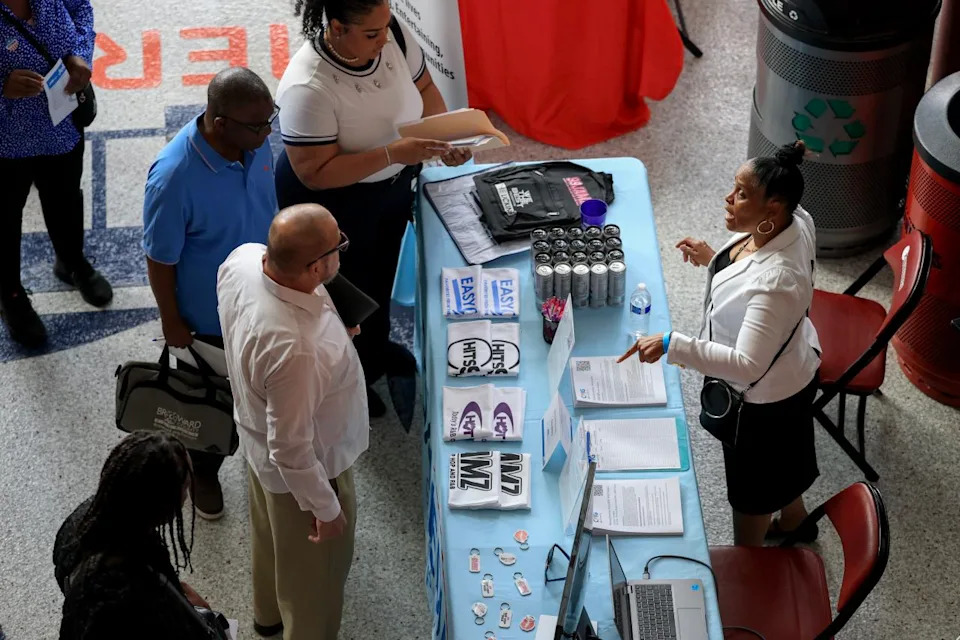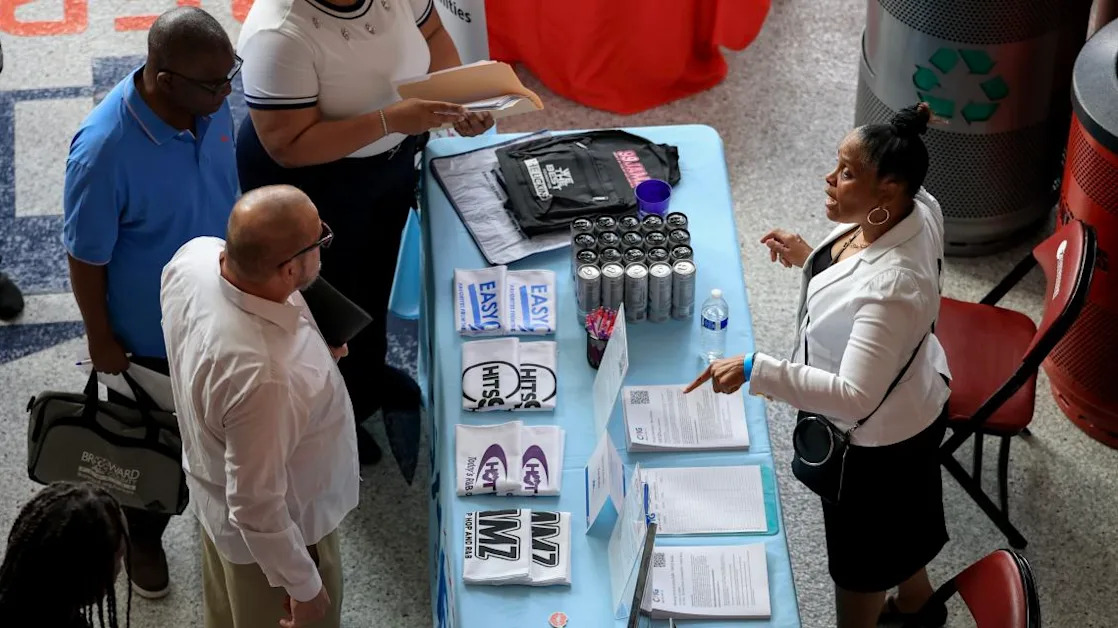
The first-quarter decline in economic output tells us almost nothing about the economy’s actual performance which, through March, was actually fine.
It tells us even less about the broader impact of President Trump’s tariffs, federal cutbacks and immigration crackdown. For that, we’ll have to await April data, starting with jobs and unemployment to be released Friday.
This will provide the first “hard” data since Trump’s April 2 tariff announcements. Federal cuts by Elon Musk’s Department of Government Efficiency were also in full swing, as were deportations , while border crossings had plummeted. A weak jobs number could vindicate Trump’s critics, a strong number would shut them up, at least for now.
I suspect, though, that the April report—regardless of the number—won’t tell us much about Trump’s impact. Businesses are certainly talking a lot about tariffs, but aren’t doing much yet in terms of raising prices or altering production plans. Federal layoffs and deportations are also probably too small to have much macro impact.
But wait, wasn’t that 0.3% annualized drop in gross domestic product in the first quarter because of tariffs? No: it was affected by a couple of statistical quirks.
GDP is calculated by adding up spending by businesses, consumers and government, plus spending by foreigners on American exports. Imports are then subtracted from this total, to arrive at spending on American-sourced products.
Imports were indeed affected by tariffs as firms stocked up to get ahead of tariffs. That import surge was then subtracted from GDP. We should have seen higher imports offset by an equivalent increase in inventory building, so that the effect of all that tariff-buying would have been a wash. Oddly, we didn’t see that, even after the Commerce Department’s Bureau of Economic Analysis assumed inventories in March rose more than preliminary data show. Without that assumption, GDP would have shrunk even more, by 1.5%, instead of 0.3%, economist Ben Herzon of S&P Global estimates.
So either domestic production was unusually weak, or the data has missed something. Brad Setser of the Council on Foreign Relations said pharmaceutical companies rushed high-valued patented drugs to the U.S. from overseas plants ahead of the tariffs, and that has been undercounted in inventory data.
Besides the unusual impact of imports, the monthly pattern of activity also held down the quarterly total. Household consumption plummeted 0.4% in January from December because of harsh winter weather and Los Angeles wildfires. Consumption rose 0.1% in February and a solid 0.7% in March.

March might be boosted by people rushing to buy cars and other items ahead of tariffs. So let’s look at services spending: it was up 0.4% on the month, and 2.4% from December annualized, in line with the pace of the last two years.
Employment data show the same picture. Private payroll growth was weak in January, so-so in February, and solid in March. The average monthly growth rate was exactly in line with the two-year average.
Presidents generally affect the economy less than they or their critics think, and that’s certainly true of Trump’s first few months.
Will that change in April? Probably not. For all the noise about tariffs, few have been passed through to customers yet. Retailers are for now trying to hold prices steady , perhaps hoping Trump, who has already announced pauses and exemptions for many tariffs, will go even further. If prices haven’t been affected, spending shouldn’t be, either.
Conceivably the impact of early tariffs and anticipation of more could put the brakes on hiring. But there’s just no sign of it yet. Claims for unemployment insurance have remained low, though they were boosted last week by New York-specific factors. An index of online job ads maintained by Indeed Hiring Lab has trended lower since early January, with no notable acceleration in the last month.
Wall Street economists project payrolls rose 133,000 in April from March, a step down from recent months but still pretty healthy. Payroll processor ADP, based on its own tally, estimates private employment grew only 62,000. But ADP’s projection is routinely wide of the mark. And even if it’s accurate, the weakness was concentrated in healthcare and education which, Pantheon Macroeconomics notes, aren’t that exposed to tariffs and have lots of job openings.
So while the markets and the public are still looking for evidence of Trump’s agenda on the economy, they might not get it tomorrow.
Write to Greg Ip at greg.ip@wsj.com


